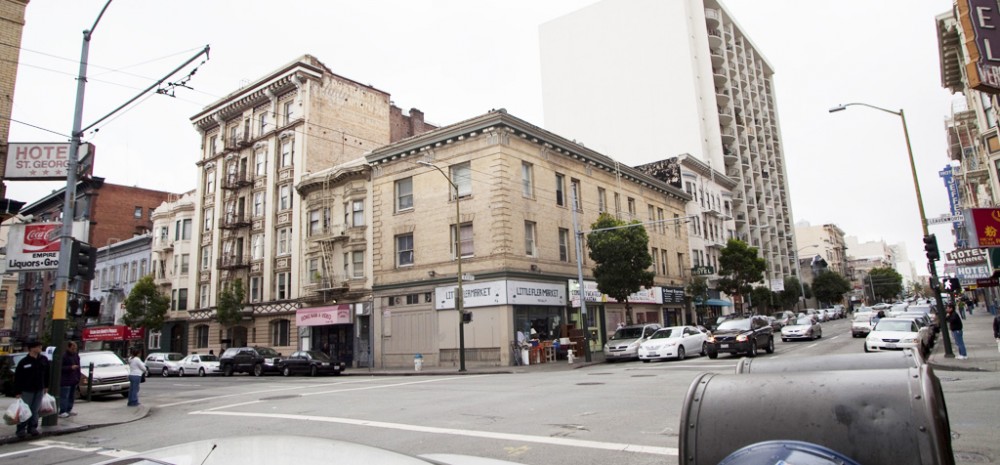History of the Tenderloin
Since shortly after the Gold Rush in 1849, the Tenderloin has been a bustling downtown community. Though it was utterly devastated after the earthquake of 1906, it was quickly redeveloped by the following year, with the historic Cadillac Hotel opening in 1907. By the 1920s, speakeasies, pool-halls, gambling dens and all manner of nightlife were ubiquitous in the Tenderloin. The neighborhood’s hard-scrabble reputation was popularized by the noir detective stories of Dashiell Hammett, a long time resident. In fact, the character Sam Spade’s apartment from The Maltese Falcon is supposed to have been modeled after the same residence that Mr. Hammett lived in.
Following the 20s, the Tenderloin remained a hub for nightlife, employing a large number of actors and musicians who lived in the neighborhood. One of the more notable haunts was The Black Hawk where jazz legends Thelonius Monk and Miles Davis (among others) cut live albums for the Fantasy Records label.
In addition to being a haven for artists and revelers, the Tenderloin was also one of San Francisco’s first neighborhoods to serve as a refuge for gay and transgender people. Prior to emergence of the Castro as San Francisco’s biggest gay enclave, Polk Gulch (on the western edge of the Tenderloin) served as the city’s queer epicenter. This tolerance was met with resistance at times, and led to a number of famous police alterations. One such event occurred outside of Compton’s Cafeteria in 1966, when riot was fueled by anger towards the police’s abuse treatment of a local drag queen.
Up until the late 40’s, housing in the Tenderloin consisted almost entirely of single resident occupancies, studio and one-bedroom apartments, and its population was almost exclusively single adults or couples. After WWII, however, the Tenderloin lost a substantial portion of its inhabitants, as people followed the trend to move away from major city centers. Because of the large amount of affordable, vacant property by the mid-70s, the Tenderloin housed a large influx of Southeast Asian immigrants and refugees that arrived after the Vietnam War.
Today, the Tenderloin is home to a considerably diverse community of people. The U.S. Census puts the population at about 25,000 people, although locals would argue that it’s higher. After the late 70s the neighborhood went from having just a few children to over 3,500. It’s one of the lowest income neighborhoods in San Francisco, and has some of the highest concentrations of homeless, elderly, disabled and ex-offenders. The Tenderloin remains a hotspot for nightlife and entertainment, and while not always pretty, has a tenor unlike any other neighborhood in the country.
